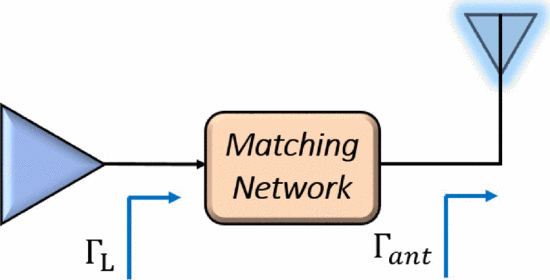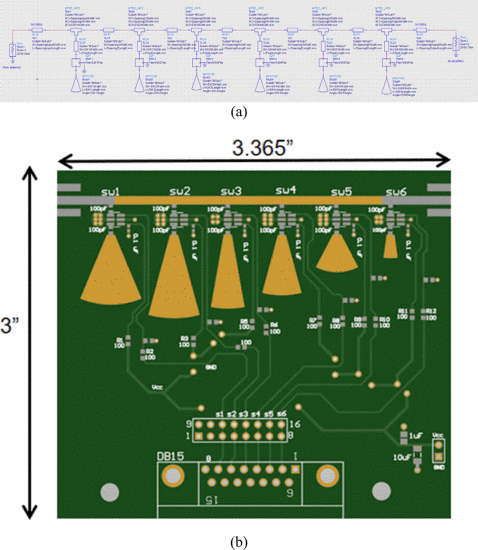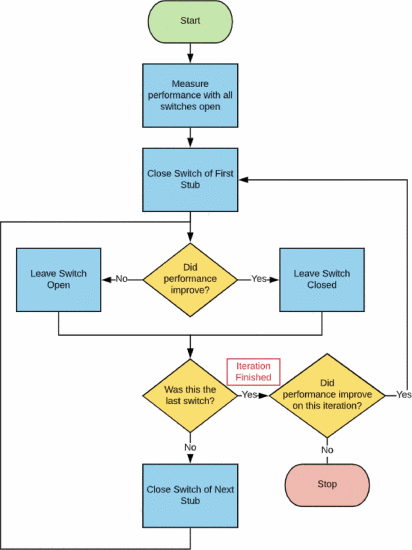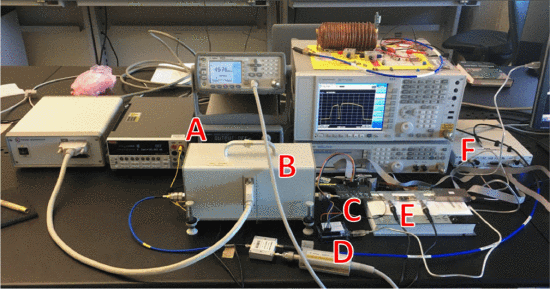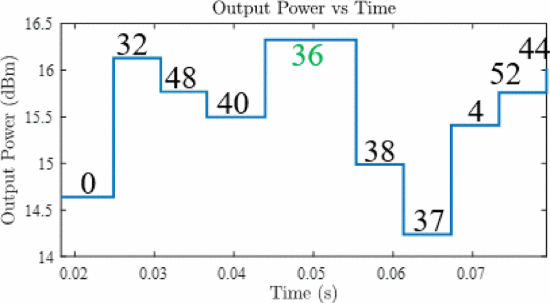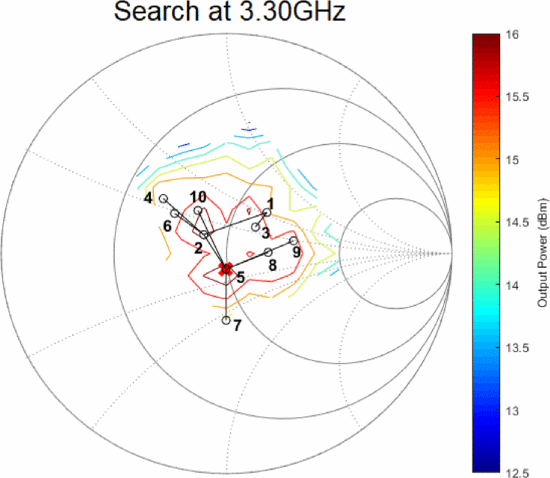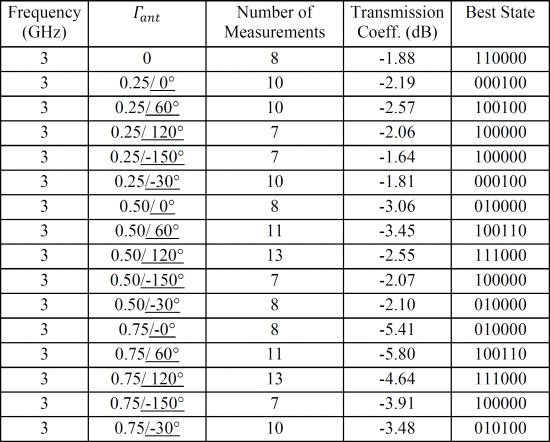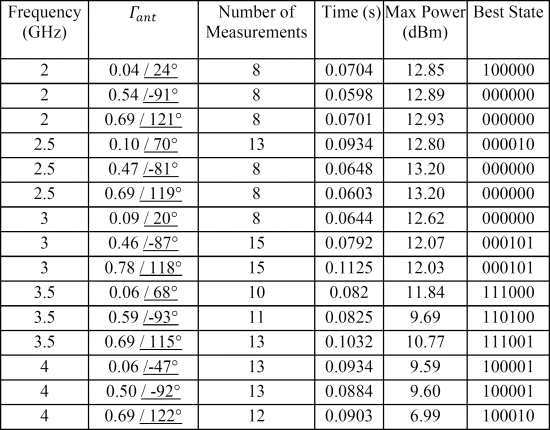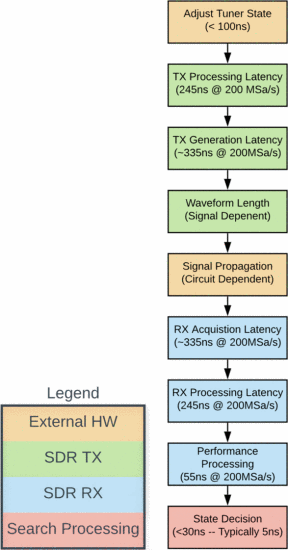Introduction
Future radar and electronic warfare (EW) transmitters will need to be frequency agile to quickly maximize range after changing frequencies in a dynamic, congested and/or contested spectral environment. High-power tuning technologies capable of fast reconfiguration, however, have heretofore not been available for use in radar and EW transmitters. The present state-of-the-art in high-power tuning technologies is a 90 W evanescent-mode cavity tuner using commercially available M3-L actuators, as presented by Semnani [1]. While this tuner presents novel high-power handling in the S-band, it reconfigures slowly due to the mechanical actuation of the discs atop the cavities. Recent results for demonstrating this impedance tuning from a software-defined radio platform with a host computer demonstrate search times of 2–10 seconds if initial information is not used and over 100 ms to perform a single tuning operation [2]. This merges the Semnani tuner with the software-defined radar controller platform, “SDRadar”, described by Kirk [3]. With the advent of high-power plasma-based switches [4]–[5], switched-stub tuners have become feasible for high-power impedance tuning with significantly reduced tuning times due to the electrical (rather than mechanical) actuation of the switches. In this paper, we demonstrate a complete search in less than
Real-time impedance matching network in radar and EW applications: The antenna reflection coefficient
Prototype Switched-Stub Tuner Design
To demonstrate fast tuning, a prototype switched-stub tuner was designed with six tuning stubs, as shown in Fig. 2. Field-effect transistor (FET) switches were used in place of high-power switches on this board, which allowed for the development of the algorithm and fast control of the optimizations. A switch was placed between each radial tuning stub and the series feedline. Closing the switch exposes the stub, while opening the switch leaves the stub unattached from the feedline. The tuner was designed to fit within
(a) Circuit schematic in keysight advanced design system and (b) Board layout for the prototype switched-stub tuner board: FET switches are used in place of high-power switches.
Reconfiguration Algorithm
We designed a discrete search algorithm that can be used on this stub tuner with
Close the switch on the first stub (100000).
Is the output power greater? If yes, leave this switch closed. If not, open the switch.
Repeat for each stub in order from the amplifier side to the antenna side.
This entire search can be re-performed starting with the bit combination that is concluded as best in the first iteration and can be re-iterated as much as desired. Fig. 4 shows that the algorithm is re-iterated until no power increase is found during a search of the switch-state combinations one Hamming distance (one bit different) from the current best performing state.
Search algorithm for optimizing the switches on the stub tuner for maximum output power.
Measurement Results
To test the algorithm, measurements were performed using a software-defined radio (SDR) controller and microcontroller synchronized with a host computer. The SDR, after calibration with a power meter, measures the amplifier output power, and the microcontroller performs the tuner movement. The host computer performs algorithmic decision-making during the development and experimentation phase. Eventually, all algorithmic decision-making and tuner control will also be placed in the SDR; however, adjustments to the SDR code during algorithmic development and testing are time-consuming due to the extended re-compile time required. The measurement setup is shown in Fig. 5. A traditional load-impedance tuner from Maury Microwave is used to emulate the changing antenna reflection coefficient
Measurement setup: A - bias supplies, B - maury microwave tuner (emulating the antenna impedance variation due to mutual coupling), C - switched-stub tuner (representing the amplifier output matching network), D - microcontroller, E - amplifier, F - software-defined radio
Graphical representations of the algorithm results for one search can be seen in Figs. 6 and 7, plotting the output power vs time as the search progresses and plotting the search path according to the tuner's S11 value at each state. This search was performed with an operating frequency of 3.3 GHz and
Fig. 7 shows the 3.3 GHz search progress on the Smith Chart, mapping the bit combinations of Fig. 6 to
Output power vs time plot for one optimization search for both the MWT-173 power amplifier and Maury microwave tuner (simulated antenna).
To test the algorithm for frequency agility, an experiment was performed where the search was performed at different frequencies between 2 GHz and 4 GHz. Upon switching frequencies, the stub tuner was reconfigured to maximize the output power of the amplifier. Table I shows the results of the optimization process for frequencies 2.0 GHz, 2.5 GHz, 3.0 GHz, 3.5 GHz, and 4 GHz with the binary states (0 = off, 1 = on for switches from stubs from the amplifier side to the antenna side of the matching network) and the related output power values.
For 2.0 GHz and 2.5 GHz, the state with all switches open and no stubs exposed to the series transmission line (000000) was selected as the best case. This is not surprising, as the introduction of a stub also results in loss to the forward transmission. As such, the optimization is more than simply selecting the state that gives the maximum-power
In addition to the frequency-agility test, the ability of the tuner to react to changes in the antenna impedance due to adjustment in the array pattern (“beam agility”) can be tested by tuning to optimize performance based on changes in
The “Transmission Coeff” values in Table II are much lower than the “Max Power” values in Tables I and III due to the different measurement setup, as only the lower power VNA was used for transmitting rather than the SDR plus power amplifier. Certain
Finally, measurements were performed to emulate tuning in both frequency-agile and beam-agile scenarios, as shown in Table III. The search results change significantly with both frequency and
SDR Implementation and Time Reduction
To streamline the time performance of the optimization, the algorithm was implemented completely on the SDR platform (eliminating the need for host computer and microcontroller, as well as the communication links between the different systems). For a single tuning operation, the host computer/SDR/microcontroller tuning time was measured at 5.231 ms. After implementation of the algorithm solely on the SDR, the tuning time for a single operation was reduced by three orders of magnitude to
Conclusions
Fast reconfiguration of a switched-stub tuner has been demonstrated for frequency agility using a platform operated by a software-defined radio controller. Complete on-the-fly optimizations to maximize output power (and range) over changes in operating frequency and antenna reflection coefficient can be completed in less than



